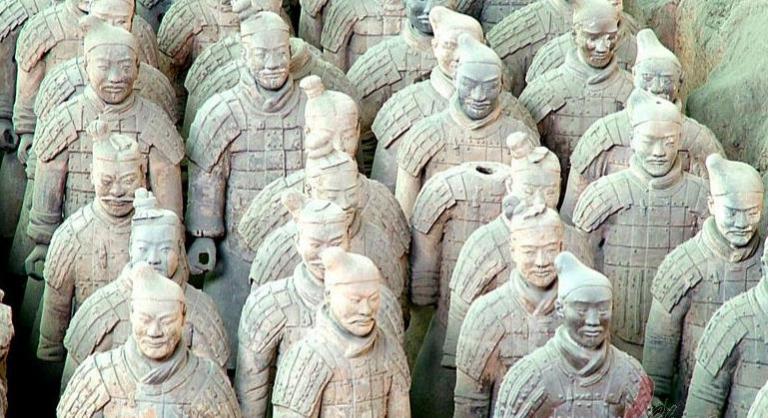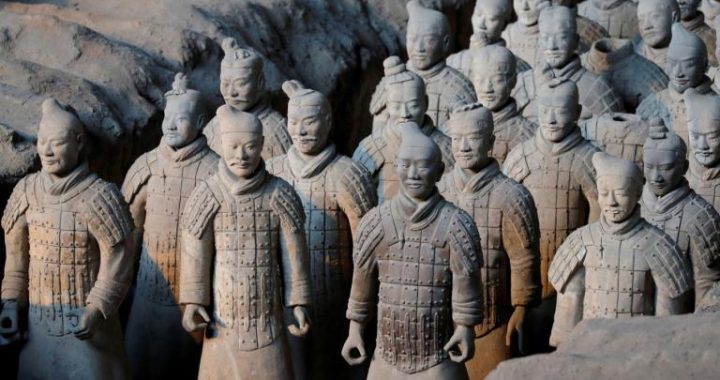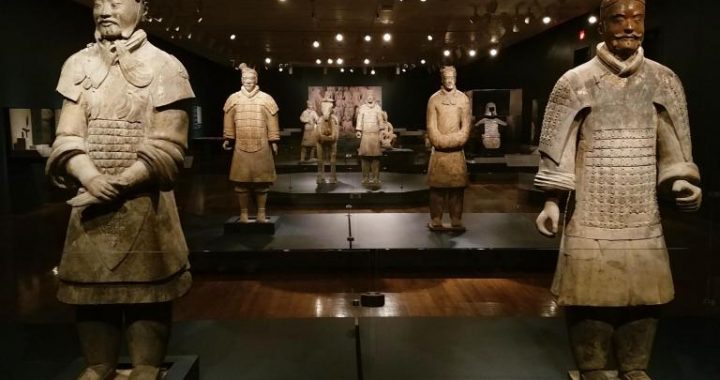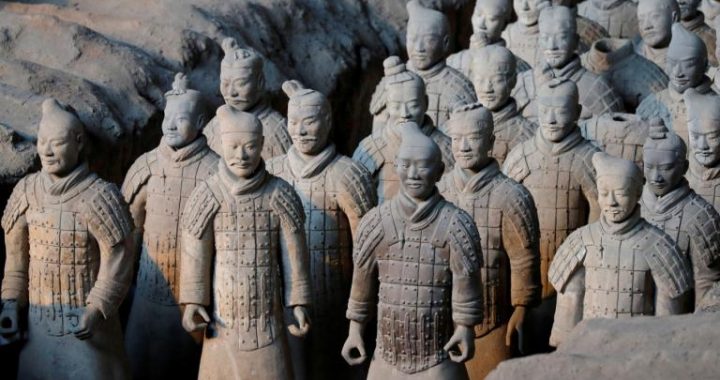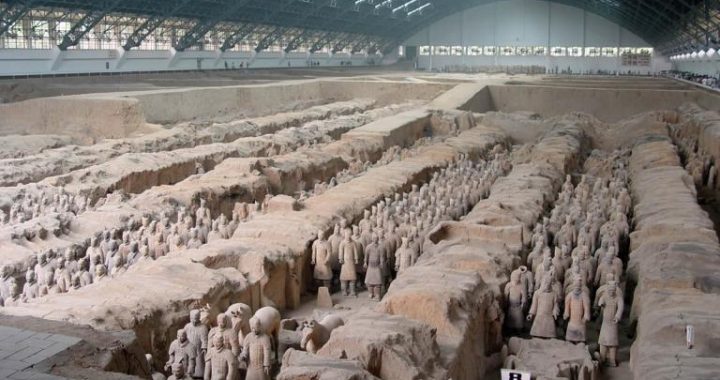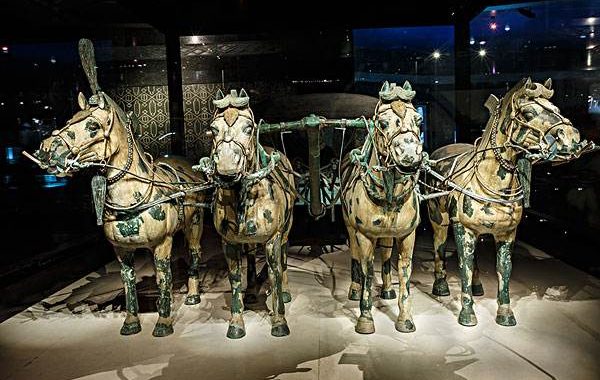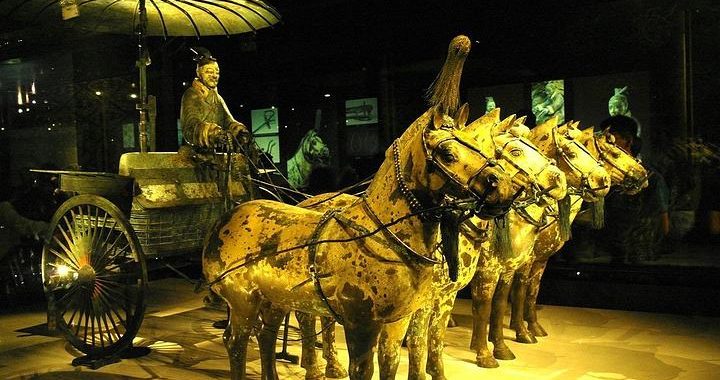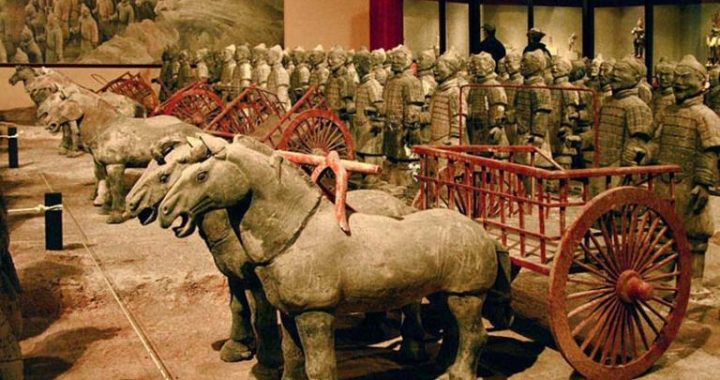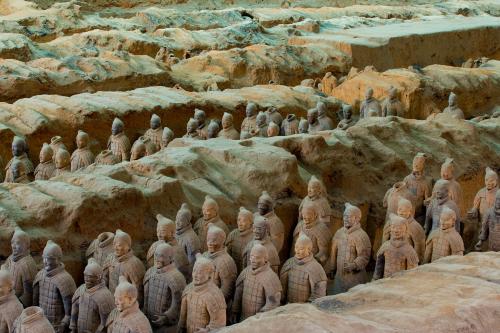The Terracotta Legions
2 min readThe Terracotta Army is the Terracotta Warriors and Horses ofQin Shihuang,the First Emperor of China.According to historian Sima Qian(145 BC-90BC),construction of this mausoleum began in246 BC and involved 700,000workers.Qin Shihuang was13 when construction began.He specifically stated that no two soldiers were to be made alike,which is most likely why he had construction started at that young age.
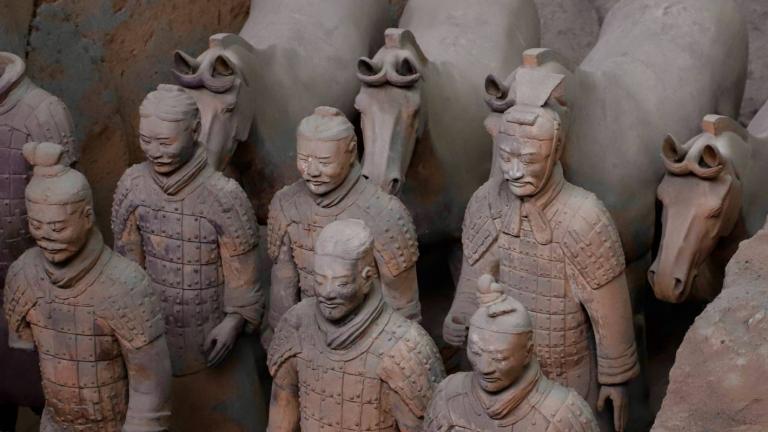
Qin Shihuang’s necropolis complex was constructed to serve as an imperial compound or palace.It comprises several offices,halls and other structures and is surrounded by a wall with gateway entrances.It was also said as a legend that the terracotta warriors were real soldiers,buried with Emperor Qin so that they could defend him from any dangers in the next life.
The terracotta figures,dating from210 BC,were discovered in1974 by some local farmers near Xi’an,Shaanxi province,China,near the Mausoleum of the First Qin Emperor.The figures vary in height,according to their role,the tallest being the generals.The figures include warriors,chariots,horses,officials,acrobats,strongmen,and musicians.
The terracotta figures were manufactured both in workshops by government laborers and also by local craftsmen.The head,arms,legs and torsos were created separately and then assembled.Studiesshow that eight face moulds were most likely used,and then clay was added to provide individual facial features.Once assembled intricate features such as facial expressions were added.It is believed that their legs were made in much the same way that terracotta drainage pipes were manufactured at the time.This would make it an assembly line production,with specific parts manufactured and assembled after being fired,as opposed to crafting one solid piece of terracotta and subsequently firing it.In those days,each workshop was required to inscribe its name on items produced to ensure quality control.This has aided modern historians in verifying the workshops that once made tiles and other mundane items were commandeered to work on the terracotta army.Upon completion,the terracotta figures were placed in the pits in precise military formation according to rank and duty.
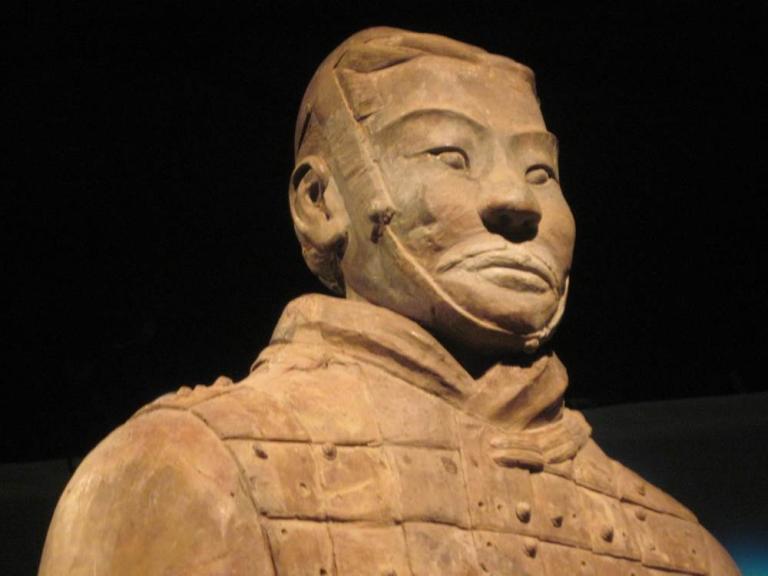
The terracotta figures are life-like and life-sized.They vary in height,uniform and hairstyle in accordance with rank.The colored lacquer finish,individual facial features,and actual weapons and armor from battle used in manufacturing these figures created a realistic appearance.The original weapons were stolen by robbers shortly after the creation of the army and the coloring has faded greatly.However,their existence serves as a testament to the amount oflabor and skill involved in their construction.It also reveals the power the First Emperor possessed,enabling him to command such a monumental undertaking.
Current estimates are that in the three pits containing the Terracotta Army,there were over8,000 soldiers,130 chariots with520 horses and150 cavalry horses,the majority of which are still buried in the pits.Many archeologists believe that there are many pits still waiting to be discovered.
